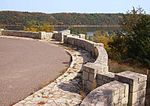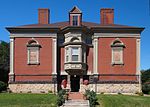Minnesota Correctional Facility – Stillwater

The Minnesota Correction Facility – Stillwater (MCF-STW) is a close custody (level 4) state prison for men in Bayport, Minnesota, United States. Built 1910–1914, it houses 1,600 inmates in seven different living areas. Additionally, approximately 100 inmates are housed in a nearby minimum security area. It replaced the original Minnesota Territorial Prison located just to the north in the city of Stillwater, Minnesota. Until recent expansion of the medium custody (level 3) Minnesota Correctional Facility – Faribault, MCF-STW was the state's largest facility by inmate population. A historic district consisting of 22 contributing properties was listed on the National Register of Historic Places in 1986 as the State Prison Historic District for having state-level significance in architecture. It was nominated for being one of the nation's earliest and most influential appearances of the "telephone pole" layout, with a large main hallway connecting each of the units, that was widely adopted by high-security prisons. MCF-STW is noted for its award-winning publication The Prison Mirror, the oldest continuously-operated prison newspaper in the United States.
Excerpt from the Wikipedia article Minnesota Correctional Facility – Stillwater (License: CC BY-SA 3.0, Authors, Images).Minnesota Correctional Facility – Stillwater
Pickett Street North,
Geographical coordinates (GPS) Address Phone number Website External links Nearby Places Show on map
Geographical coordinates (GPS)
| Latitude | Longitude |
|---|---|
| N 45.027777777778 ° | E -92.788888888889 ° |
Address
Minnesota Correctional Facility – Stillwater
Pickett Street North 970
55003
Minnesota, United States
Open on Google Maps









